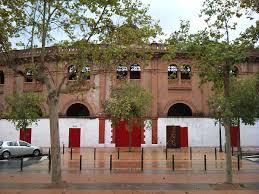Exploring Castellon: History, Culture, and Recent Developments

Introduction
Castellon, a vibrant province in eastern Spain, is renowned for its rich cultural heritage, stunning landscapes, and significant economic contributions. Nestled between the Mediterranean Sea and the influential mountain range of the Iberian Peninsula, Castellon has become an essential destination for tourism, commerce, and education. Its relevance today is underscored by the ongoing efforts to cultivate sustainable development and enhance its cultural profile, making it a focal point for both locals and visitors alike.
Historical and Cultural Significance
Historically, Castellon has been a melting pot of cultures due to its strategic position. The region reflects a tapestry of influences from the Romans to the Moors, evident in its architectural marvels and local traditions. The capital, Castellon de la Plana, is home to landmarks such as the Fadrí Tower and the historic La Llotja del Cànem. Festivals like the Magdalena Festival, celebrated in March, draw significant crowds, highlighting the province’s deep-rooted customs and communal spirit.
Economic Development
In recent years, Castellon has seen a significant transformation in its economic landscape. The province is now a leader in ceramics production, with numerous companies exporting their goods worldwide. The Castellon Chamber of Commerce has reported a steady increase in investment, with a focus on innovative technologies and renewable energy sources. Additionally, the agricultural sector, particularly citrus fruits and olives, continues to thrive, contributing to the region’s economy.
Recent Events and Future Prospects
Notable recent developments include the launch of the Castellon Sustainable City initiative, aimed at promoting eco-friendly urban planning and transportation. The initiative has brought together public and private sectors to enhance the city’s infrastructure while prioritising environmental conservation. Furthermore, Castellon is actively improving its tourism sector, showcasing attractions such as the Sierra de Espina natural park and pristine beaches along the Costa del Azahar.
Conclusion
Castellon is more than just a picturesque region; it is a dynamic hub that balances its rich historical roots with modern advancements. As the province continues to evolve, its commitment to sustainable development and cultural preservation will resonate in years to come. For tourists and investors alike, Castellon represents a unique opportunity to engage with a region poised for growth while appreciating its vibrant heritage.
